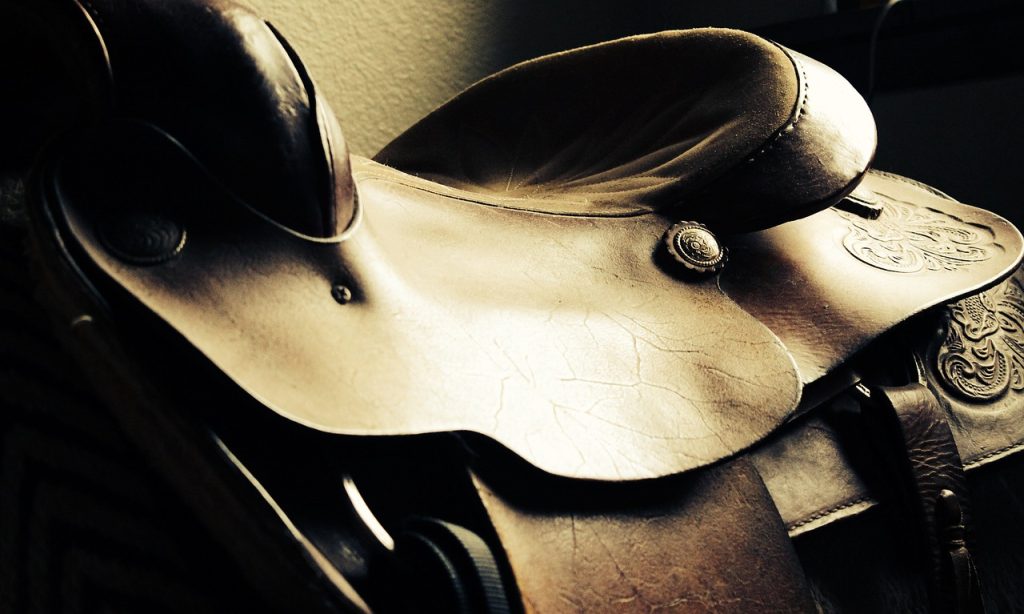Why Saddle Conditioning Matters
Imagine embarking on a long trail ride or entering a show ring, only to be met with discomfort caused by a poorly conditioned saddle. Saddle conditioning isn’t just about aesthetics; it’s about ensuring that both you and your horse have an enjoyable and safe journey. By properly caring for your saddle, you’re investing in countless hours of comfortable riding and preserving the saddle’s value.
The Process of Saddle Conditioning
Saddle conditioning involves a few fundamental steps that, when followed meticulously, can make a world of difference.
1. Cleaning the Saddle
Start by cleaning the saddle. Remove dirt, sweat, and grime using a damp cloth. This step not only prepares the leather for conditioning but also prevents debris from being rubbed into the material during the conditioning process.
2. Choosing the Right Leather Conditioner
Next, select a high-quality leather conditioner that matches the type of leather your saddle is made from. This is crucial because different leathers have unique requirements. An oil-based conditioner might be ideal for one saddle, while a wax-based one might suit another. Apply the conditioner evenly, allowing the leather to absorb it naturally.
3. Buffing and Polishing
Once the conditioner has been absorbed, gently buff the saddle with a clean, dry cloth. This step helps to ensure that excess conditioner is removed and the saddle achieves a healthy, supple sheen. Proper buffing also prevents the saddle from feeling sticky or greasy, providing a comfortable and secure seat for the rider.
Choosing the Right Leather Conditioner
Selecting the right leather conditioner can seem overwhelming, given the array of products available. Consider factors such as the type of leather, climate conditions, and intended use of the saddle. A dressage saddle, for instance, might require a different conditioner compared to a Western saddle. It’s advisable to consult with experts or conduct research to find the best match for your saddle’s needs.
Step-by-Step Guide to Saddle Conditioning
- Removing Dirt and Debris: Begin by gently wiping down the saddle to remove any surface dirt or sweat.
- Applying the Conditioner: Using a soft cloth, apply a small amount of conditioner to a hidden area first to test for any adverse reactions.
- Buffing and Polishing: After allowing the conditioner to be absorbed, buff the saddle with a dry cloth until it shines.
Frequency of Saddle Conditioning
A common question among riders is how often they should condition their saddles. While there’s no one-size-fits-all answer, a general rule of thumb is to condition your saddle about every 8-12 weeks if it’s regularly used. However, if the saddle sees heavy use or is exposed to harsh weather conditions, more frequent conditioning might be necessary. Always be attuned to your saddle’s needs and the specific recommendations of the manufacturer.
Common Mistakes to Avoid
In the pursuit of a beautifully conditioned saddle, riders can sometimes make inadvertent mistakes that actually harm the leather.
Tips for Preventing Wear and Tear
Proper saddle conditioning is only one aspect of care. To maximize the lifespan of your saddle, consider these additional tips:
- Use saddle pads to provide an extra layer of protection.
- Ensure your saddle fits properly to prevent undue stress on specific areas.
- Regularly inspect your saddle for signs of wear, such as loose stitching or cracked leather.
Long-Term Benefits of Proper Saddle Care
Investing time in saddle conditioning pays dividends. Imagine a ride where your saddle feels like an extension of your body, where you and your horse move in perfect harmony. Additionally, should you decide to upgrade or sell your saddle, its well-maintained condition could significantly impact its resale value. Furthermore, proper saddle care isn’t just about preserving gear – it’s about respecting the partnership between rider and horse.
FAQs
- How often should I condition my saddle?
Regular conditioning every 8-12 weeks is recommended, but adjust based on usage and conditions. - Can I use household products as leather conditioners?
It’s best to use products specifically designed for leather care to avoid damage. - Is there a specific conditioner for synthetic saddles?
Yes, synthetic saddles require a conditioner formulated for synthetic materials. - Can I ride immediately after conditioning the saddle?
It’s advisable to wait a bit to allow the conditioner to fully absorb before riding. - What should I do if my saddle gets wet?
Let it dry naturally away from direct heat, then condition it to restore moisture.
Conclusion
Your saddle is more than just a piece of equipment – it’s a connection point between you and your equine companion. By regularly conditioning your saddle, you’re ensuring both your comfort and your horse’s. It’s a simple yet impactful practice that speaks volumes about your commitment to the equestrian lifestyle.
